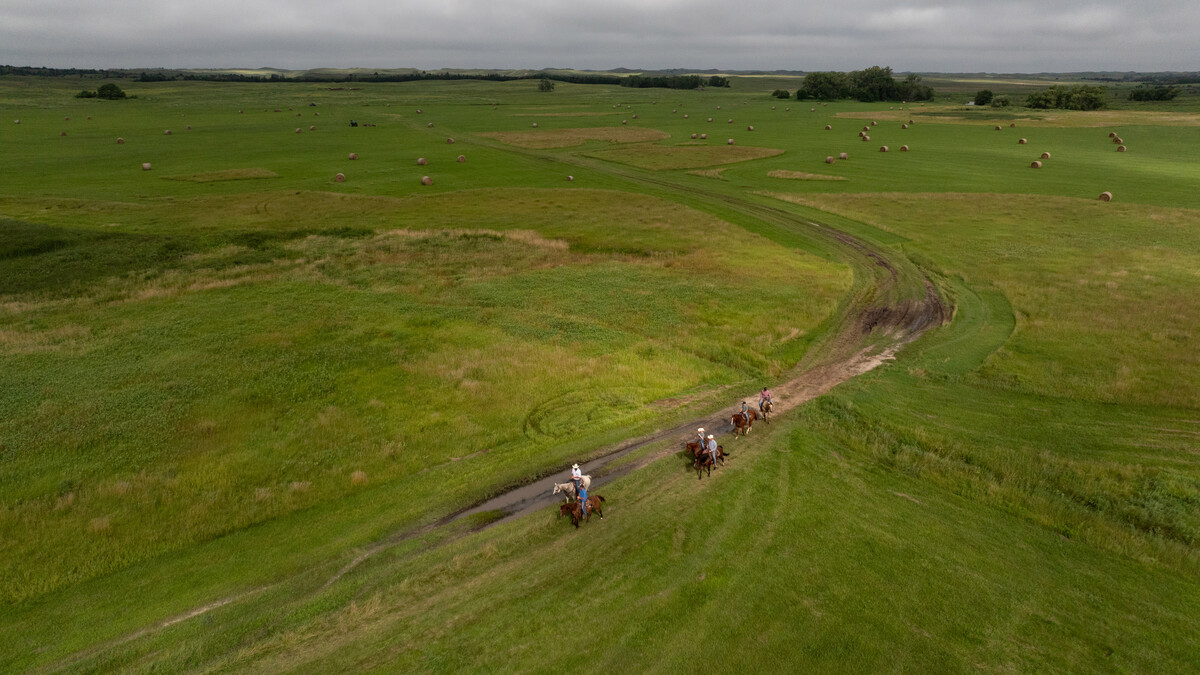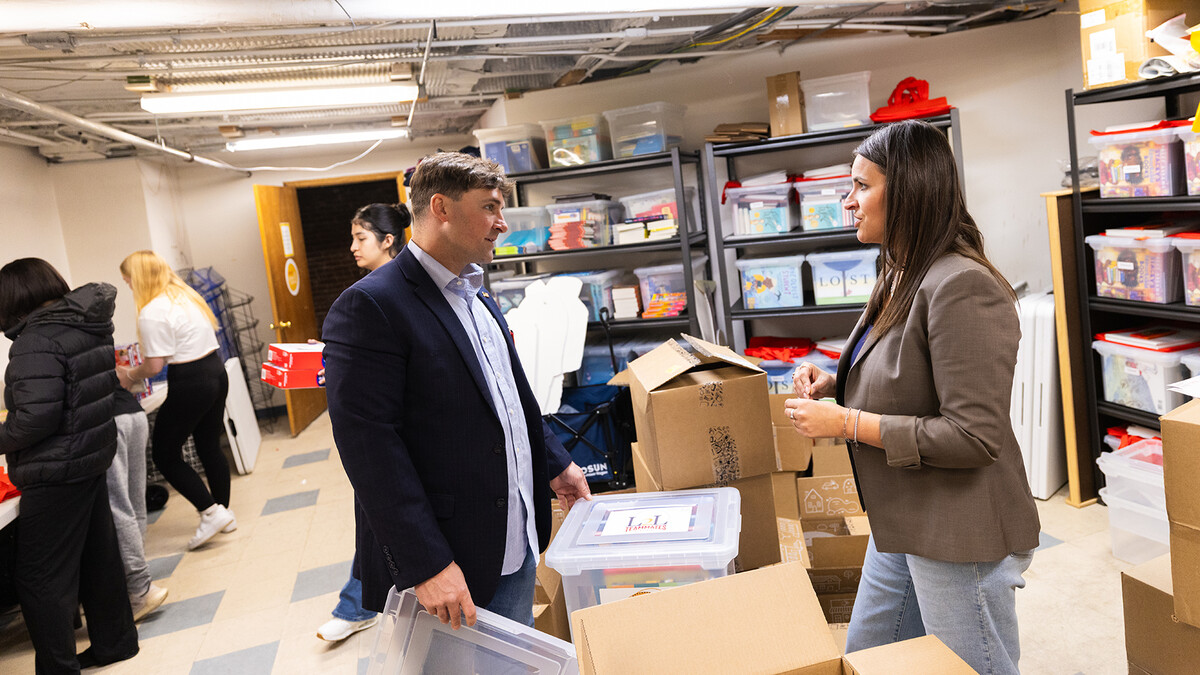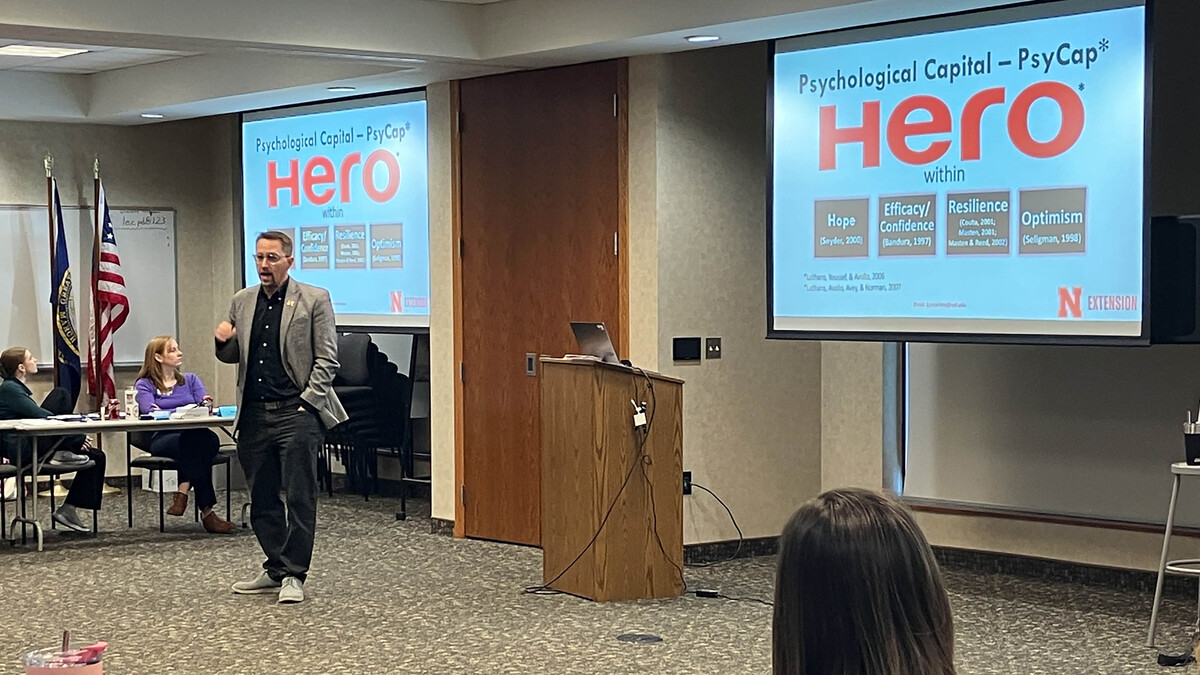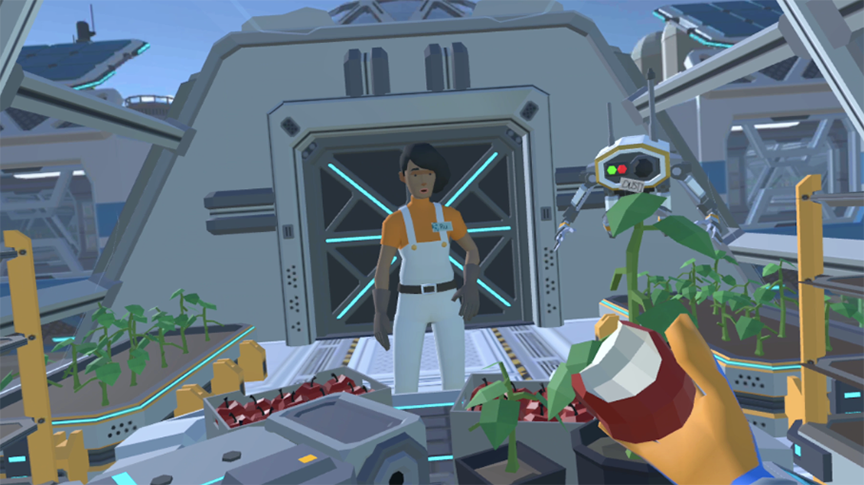
Imagine existing as an apple tree, stretching your branches toward the sun and sinking your roots into the soil. Imagine life as a prairie dog, digging tunnels among those roots and peeking out to feel the sun’s warmth. Imagine being a robot tractor, planting vegetables beside the tree.
Now, thanks to a team of University of Nebraska–Lincoln researchers and emerging media artists, players can step into all those roles and more through an extended reality (XR) experience that brings science to life.
“MuMu: Worlds of Connection Chapter One” is an experience where players learn about network science — the study of connections that are often complex and hard to see — by investigating how an apple farm thrives when humans, plants, animals and technology coexist in balance. Rather than explaining these connections in a textbook way, the experience lets players feel them.
Developed in five years with a $1.2 million Science Education Partnership Award from the National Institutes of Health, MuMu — short for Multispecies Multiplex — was created by more than 20 students, staff and faculty, along with professional collaborators DotDot Studio and Will Freudenheim. It is now free to play on the Meta Horizon Store, giving young audiences — and curious adults — a chance to explore a living, breathing ecosystem from multiple perspectives.
“The game is really visionary,” said Ash Eliza Smith, creative director, voice actor and a former faculty member in the Johnny Carson Center for Emerging Media Arts. “You shift from human to robot to tree to prairie dog. It’s about connecting worlds to show how life and technology interact. We hope this chapter becomes part of a much larger world that partners with other researchers and labs.”
Seeing the hidden connections
Multispecies health studies the links between human well-being, the environment and other life forms. Likewise, multispecies design aims to create tools and systems that serve humans, animals, plants — and even machines — in mutually beneficial ways. MuMu illustrates these concepts by showing how every actor on the farm contributes to a healthy, functioning ecosystem.
“Seeing hidden connections is tough,” said Julia McQuillan, professor of sociology and principal investigator on the SEPA grant. “And sociology can be quite abstract and hard to convey.”
McQuillan credits Judy Diamond, University Libraries professor emerita, for inspiring the project. Diamond previously led a series of educational comics about viruses and infectious disease, aimed at teens. “We are building on comics,” McQuillan said. “With XR, we’re inventing a whole new rulebook for how people can learn.”
XR is an umbrella term for immersive technologies that blend the physical and digital, including virtual reality, augmented reality and mixed reality, as well as emerging platforms such as interactive websites and installations.
Though new to XR technology when the project began, McQuillan was surrounded by creative expertise. Stephen Ramsay, professor of English at Nebraska, composed the game’s score and designed spatial sound effects, giving players the sensation of truly moving through three-dimensional space. Faculty and creative technologists from the Carson Center brought storytelling, animation and interaction design skills to the project. Former student Sam Bendix, now a creative technologist, managed communications and contributed to world-building.
With grant funding completed, MuMu’s long-term stewardship now resides with Edgeworks, the Carson Center’s design, research and production bureau, and is also linked through the Worlds of Connections webpage hosted by the Center for Math, Science and Computer Education.
Network science meets everyday life
The SEPA grant came through the National Institute of General Medical Sciences. McQuillan’s proposal connected to work from the university's Rural Drug Addiction Research Center, a federally funded Center of Biomedical Research Excellence that studies how social networks influence the spread of opioid use.
“Network science is central to understanding public health,” McQuillan said. “We wanted to help young people grasp how networks — between humans, animals and the environment — affect health outcomes.”
Designed for middle school-aged youth, MuMu uses the farm as a metaphor for these connections.
“Scientists study how healthy soil and prairie dogs help trees,” McQuillan said. “Prairie dogs aerate the soil, which supports plant growth. That, in turn, supports nutritious food and human health.”
To ensure scientific accuracy, the team collaborated with veterinary epidemiologist Elizabeth VanWormer, coordinator of the university's One Health program; biological systems engineer Santosh Pitla, who designs robotic farm equipment; and mathematician Bilal Khan, a computer network scientist.
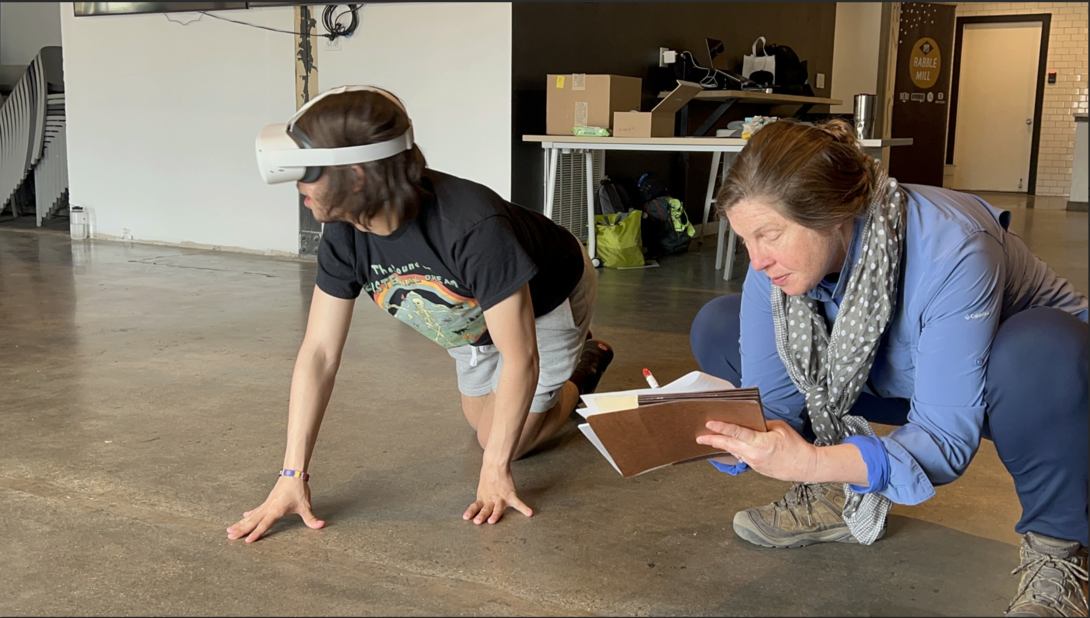
Glimpse into the future
The setting is a high-tech apple farm 10 years in the future. The goal: balance the needs of wildlife, farming and technology to keep the system healthy. The visuals aren’t photo-realistic, but the sense of space is striking.
“You’re moving through three-dimensional space,” McQuillan said. “The sound moves with you. You come up to a table and stop because your mind tells you it’s real.”
Over two years, the game was play-tested by Lincoln middle schoolers in the NE STEM 4U Club, students from the Bay High Focus Program, participants in NIH SciED and IDeA States conferences and participants in the Sovereign Native Youth Summer Program for Advancing Research Knowledge at the University of Nebraska Medical Center.
Smith said she loved watching players reach the “aha” moment.
“It’s all connected,” she said. “XR gives you just enough distance from your own life to see that reality from a new perspective.”
The project was supported by the National Institute of General Medical Sciences of the National Institutes of Health under award No. R25GM129836. The content is solely the responsibility of the authors and does not necessarily represent the official views of the NIH.
Play MuMu: Worlds of Connection
The game is available for free on the Meta Horizon Store. Learn more about network science and health and find hands on activities on the Worlds of Connections webpage.


